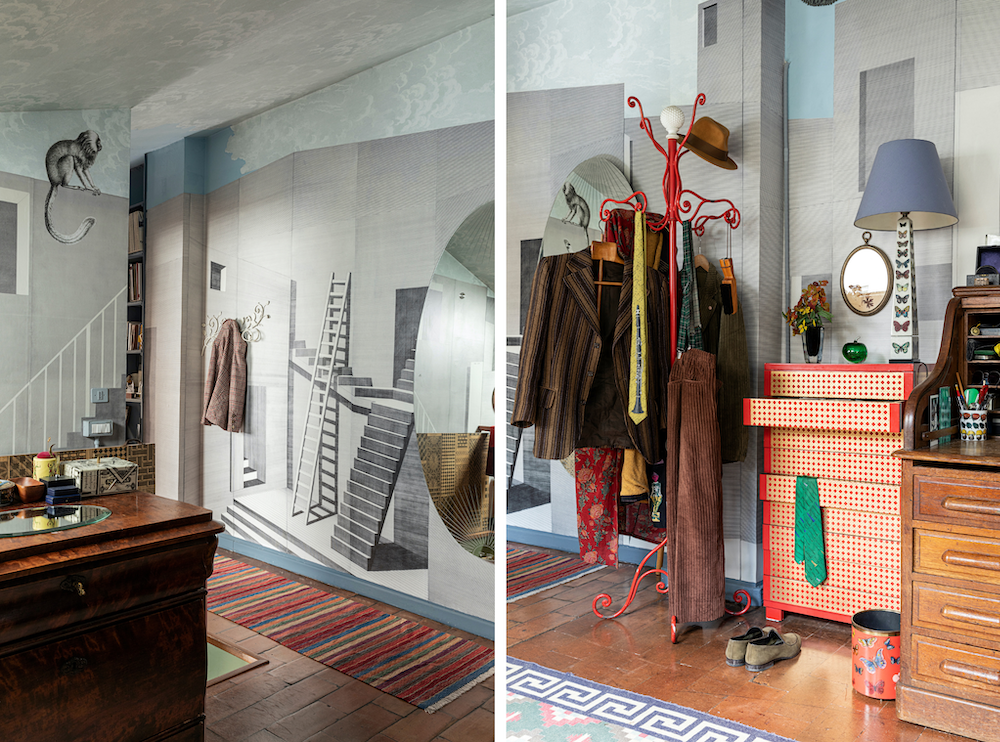
When you grow up in an environment shaped by the febrile, artistic mind of Piero Fornasetti, there really is no rest for your imagination. The legendary designer’s septuagenarian son, Barnaba, who has lived here pretty much his whole life, never gets tired of the visual stimulation. “The idea of being able to change the small installations I make at home makes me happy and allows me to develop my creativity,” he admits. “I like having a place where the eye can imagine surreal worlds.”
The constant reconfigurations mean that, no matter how many times we see the interiors of Casa Fornasetti in the Città Studi quarter of Milan – the courtyard villa has been featured in magazines and design blogs the world over – they feel fresh. But these rooms also dazzle because they are consummately egalitarian in their flamboyance. Like Piero Fornasetti’s iconoclastic visual vocabulary, there’s something for everyone (except, perhaps, fanatical followers of rigorously austere forms of modernism).

“It is enduring,” explains Barnaba of his father’s unique aesthetic (and by extension, this house), “because it uses images from every era, ones that are preserved in our imagination and that recall dreams of the past, of the future, of history. It is not tied to a single style or to fashion. It is a key that lets you into the world of the imagination.”

His most recent alterations are an employee kitchen and lounge that two generations ago served as headquarters for Barnaba’s grandfather’s business, and a third-floor attic Barnaba has renovated into his personal suite. Both are filled with Fornasetti furnishings and objects, the astonishing breadth of which makes us understand how, by the 1960s, there were some 11,000 products on the market decorated with motifs Piero, an accomplished printmaker and artist, conjured from his surrealistic prankster nature.
Barnaba has run the firm since his father’s death in the 1980s. He is an easily identifiable figure in Milan, thanks to his distinctive dandyish attire. His foppish sartorial predilections are especially apparent in his private quarters, where drawers and wardrobes burst with elements of his colorful ensembles (often augmented by Fornasetti ties).

Asked if the ebullient artistic expression and visual stimulation of the bedroom doesn’t contradict the conventional wisdom that sleeping chambers should be restful, Barnaba insists that such vibrancy doesn’t preclude serenity. Yet he was careful to protect his slumber by hanging four rosy-cheeked cherubs by his bed. “I think it’s nice to have cherubs where you sleep.”
Photography by Laura Fantacuzzi and Maxime Galati Fourcade.
For more like this, be sure to check out the color-filled life and home of artist Morag Myerscough.
Like what you see? Get it first with a subscription to aspire design and home magazine.
